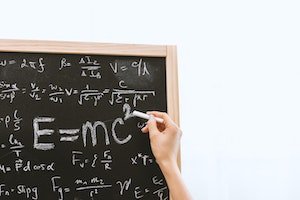History of physics:
The science that examines both matter and energy is called physics. Ancient astronomy and natural philosophy, which were both used in many different civilizations around the world, are the roots of physics.
Many scholars made discoveries and advances in disciplines like optics and mechanics during the medieval European and Islamic civilizations, which greatly aided the development of natural philosophy.
common physics, Only in the 20th century were phenomena like heat, sound, electricity, magnetism, and light described, along with visible things moving more slowly than the speed of light.
In the early 16th century, an Italian got the ball rolling by measuring and observing the bald roller. Galileo also turned the pendulum and dropped different-sized objects off the leaning Tower of Pisa to see what would happen. And despite His ideas, they irritated God as well as the Pope. Galileo’s efforts became the foundation stone for modern physics.
Later, free from anger, Pope Isaac Newton moved things on by abandoning balls and embracing apple. Why, he pondered, did they always fall downward, rather than sideways or upward? He had a solution by 1687. Gravity was a force that operated on balls, apples, and planets, keeping them in nice, predictable orbits around the sun. James Clerk Maxwell investigated more riddles in the 1800s.
He demonstrated how electricity and magnetism are related and can be combined to form a single entity known as electromagnetism.
All that remained was to fill a few leftover gaps. However, by 1900, the openings were growing larger. The most recent findings did not build on earlier ones. To say the least, X-rays and radioactivity were strange. Lord Kelvin, a well-known physicist, noticed dark clouds looming over the subject.
Then, in 1905, a Swiss patent clerk set off a full-fledged storm. Einstein. Albert Einstein, then 26, tore up the screenplay. First, he asserted that light is a type of wave that also exists in groups or particles. He published his famed equation e equals MC squared the same year.
It asserts that matter and energy are equal. And, as if that wasn’t enough, he revealed the mind-boggling findings of a thought experiment. So keep your heads up.It is assumed that the speed of light in a vacuum is constant. Assume someone is keeping an eye on a fast-moving spaceship.
They would notice the ship’s clocks operating slower than their own, and the ship shrinking in size. But everything would be routine for the astronauts inside. Time and space, according to Einstein, can alter.They vary depending on who is observing. This is referred to as special relativity.
His theories challenged conventional physics. He’d throw open the door to the strange world of the quantum, where cats can be both living and dead, God plays dice, and everything is uncertain. His renowned equation led to the development of nuclear energy. The Large Hadron Collider would be useless without special relativity. Both black holes and the Big Bang were foretold by general relativity, which is now accepted by both the church and science. Galileo would have approved. Congratulations, Albert.

